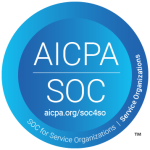PDF editing in Salesforce has evolved beyond basic viewing and downloading. Modern users expect to collaborate, review, and finalize documents without switching tools or exporting files. Today’s built-in and integrated PDF editing capabilities make that possible. These features empower sales, service, and operations teams to annotate, compress, and edit documents securely inside Salesforce, reducing delays and improving document accuracy.
Digital transformation in Salesforce often focuses on automation and analytics. However, document workflows are still exceedingly time-consuming. If users handle issues outside the platform, they can cause problems. Fortunately, recent advances in PDF editing bring these actions directly into Salesforce records, helping teams maintain continuity and reduce manual effort.
1. Annotation for Real-Time Collaboration
Annotation tools allow teams to comment, highlight, and mark up PDFs without altering the original content. This feature brings collaboration directly into Salesforce, keeping all document feedback in one place. Instead of sending attachments back and forth, users can leave notes that others can view instantly.
In practice, annotation saves time for departments that work on approvals or reviews. For example, a legal team reviewing an agreement can highlight key sections and leave instructions for revisions in the same Salesforce record. The result is a faster feedback cycle and fewer version conflicts.
S-Drive extends this idea further by storing annotated files directly in Salesforce, ensuring version control and compliance across teams. You can explore how organizations streamline case management and documentation using Case File Management and Work Orders.
2. In-Line Editing for Fast Revisions
In-line editing is one of the most practical PDF features available within Salesforce. It enables users to modify text, update form fields, or correct details on a PDF without exporting the document. For example, if a customer name or contract date needs a change, teams can edit it right inside the system.
This feature is extremely useful for operations that deal with many forms, like service requests or sales proposals. Instead of creating a new document for each small change, users can edit the record directly to save time.
Combining in-line editing with document generation and eSignature tools creates a seamless workflow. Teams can generate a PDF, edit it in real time, and send it for approval in one motion. The ability to handle everything within Salesforce keeps data integrity intact and improves visibility across teams.
3. Secure Compression and File Optimization
Large PDFs often slow down uploads, email exchanges, and record storage. Compression tools built into Salesforce-compatible solutions help users reduce file size while maintaining document quality. By optimizing PDFs before storing or sharing them, organizations save bandwidth and storage space without sacrificing clarity.
For industries that use high-resolution images, like real estate or education, file compression can directly affect productivity. Instead of waiting for bulky uploads, compressed files are instantly available for sharing and collaboration.
S-Drive leverages Amazon S3 storage, which scales effortlessly while maintaining speed. Teams that manage marketing materials or large digital assets can also look at Marketing Content Management to see how efficient file handling enhances campaign execution.
4. Redaction for Compliance and Privacy
Every organization that manages contracts, customer records, or financial documents faces privacy obligations. Redaction tools help users securely remove or mask sensitive information before sharing a file. Inside Salesforce, this function helps compliance teams stay in control. It protects personal data throughout the document’s lifecycle.
For example, financial service firms must regularly exchange forms containing personal identifiers. Redaction allows these teams to share required data with auditors or clients while concealing confidential details. Instead of relying on third-party software, built-in redaction simplifies compliance right inside Salesforce.
Using a tool like S-Drive designed for Salesforce, helps businesses store redacted versions in the same record system. This reduces compliance risks while keeping workflows organized and audit trail intact.
5. Page Reordering and Merging for Clean Final Versions
When teams generate or receive multiple documents, combining and organizing them can become chaotic. Page reordering and merging tools bring order to that process. Users can rearrange pages, merge multiple PDFs, or extract specific sections, all within Salesforce.
This functionality benefits departments that handle multipart forms or require unified reporting. A customer success team, for example, might merge onboarding forms, signed agreements, and training documents into one complete package. Keeping these files unified within Salesforce simplifies later retrieval and ensures every customer record remains complete.
In addition, combining this feature with version tracking clearly logs updates or replacements. S-Drive’s document versioning features make this easy. Every stakeholder can see the latest version and still access earlier ones.
Why PDF Editing Matters Inside Salesforce
PDFs remain one of the most widely used file formats for contracts, reports, proposals, and client communications. Yet many teams still rely on external software to handle even the simplest edits. Moving these functions into Salesforce eliminates that friction.
When you integrate PDF workflows with records, opportunities and cases move forward faster. Reps spend less time downloading, naming, or re-uploading files. Managers gain instant visibility into who last updated a document. Compliance officers maintain full audit trails.
The productivity gains become even more visible when these editing features align with Salesforce automation tools. For instance, a workflow can trigger a document review once a stage changes or notify a manager when a redacted file is ready for approval. The combination of automation and PDF editing turns routine document handling into a streamlined process.
Improving Document Accuracy and Consistency
Errors in documentation cost time and money. Inconsistent file versions or outdated templates create confusion across teams. With in-platform editing, annotation, and merging tools, organizations minimize these risks. Edits happen in real time, annotations are visible to all stakeholders, and version tracking ensures the right document is always attached to the right record.
This consistency directly improves customer experience. A client signing a corrected contract or reviewing an updated proposal sees accuracy and responsiveness as a reflection of professionalism. Salesforce users who integrate native PDF tools demonstrate that attention to detail across every customer interaction.
How S-Drive Enhances PDF Editing in Salesforce
S-Drive extends Salesforce document capabilities with secure storage, version control, and embedded PDF tools. Instead of relying on external storage or disconnected applications, users can perform advanced edits within the familiar Salesforce interface.
For example, a sales team can open a quote PDF, annotate a pricing note, update the text, compress it, and send it for eSignature without leaving the system. That continuity protects data accuracy and shortens the sales cycle. Similarly, customer service teams can merge support documents and upload proof of resolution, keeping every interaction visible and auditable.
Organizations that handle customer-facing documents can explore how S-Drive improves file organization in Folder Management for Customer-Facing Documents. It shows how structured folder hierarchies, combined with editing and sharing tools, make information easier to manage and distribute.
Building a Complete Document Workflow
When you combine PDF editing with generation, eSignature, and AI-powered OCR, Salesforce becomes a unified document hub. Data flows between records and documents automatically, ensuring every file reflects accurate and current information.
For instance, teams can auto-populate templates with Salesforce data, edit them inline, and send for signature without exporting. Once completed, the document automatically returns to the corresponding record, maintaining full visibility across the lifecycle. This level of integration transforms document management from an isolated process into a connected workflow that keeps every department aligned.
S-Drive’s suite of tools enables that transformation. The platform brings together PDF editing, secure storage, and automation to make document handling faster and more compliant.
The Next Step
Strong PDF capabilities inside Salesforce reduce the friction that slows down document-heavy processes. Teams that embrace annotation, in-line editing, compression, redaction, and merging see measurable gains in accuracy, speed, and collaboration.
If you’re looking to modernize your Salesforce document workflows with PDF editing and secure file management, S-Drive delivers a unified solution. Contact us or visit our AppExchange page to learn more about what S-Drive can do for you.



